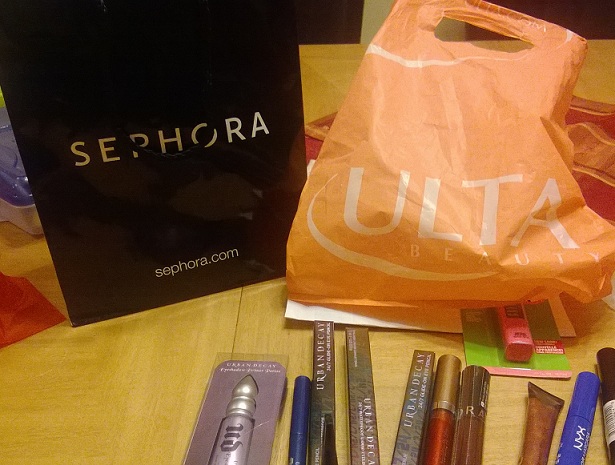In an age when customers research practically everything before they buy, when there are mobile apps that point people to retailers with the lowest prices on items, and brand loyalty seems at an all time low, how does a small business stay competitive without sacrificing profits?
I began answering this question in my previous post, 3 Ways to Avoid Competing on Price. I mentioned three specific ideas:
1. Making bigger, bolder promises — and backing them up
2. Work on your secret sauce. Do something no one else does or add a unique touch of excellence to the mundane (simply make what everyone takes for granted into an extraordinary experience)
3. Develop a killer value relationship with your customers. (Unique propositions are good; unique relationships are better.)
Smack dab in the middle of this conversation about pricing, my wife spent a good chunk of the day shopping.
And just like you’d expect from a good wife, she illustrated my point, albeit inadvertently, by spending over $100 on makeup. Check out the picture above.
I’m pretty sure Ulta Beauty and Sephora have higher profit margins than the average drug dealer. But, that’s where my wife shops.
She could save more than 50% by buying her cosmetics at the local beauty supply or even Walmart.
But when it comes to makeup, price is nowhere near the top of her priority list. She happily pays premium prices for higher quality and unique color palates.
The difficulty with building loyalty is a good point…in some circumstances.
But is Nike struggling to maintain its customer base? Or Apple? Or Coke? Granted, these are established market leaders and most of us are not.
There’s still something to learn from the big boys.
Inexpensive offers almost always draw attention.
But if your marketing message and positioning speak directly to the customers’ need in a way no one else speaks or solves a problem no one else is addressing, price comparison fades.
Have you ever noticed that Excedrin Extra Strength and Excedrin Migraine have IDENTICAL active ingredients in identical dosages?
But one is marketed as the solution to a specific pain. People will pay more for the confidence that comes with that kind of focus.
It isn’t necessarily an issue of loyalty. It’s Sales and Marketing 101: What’s In It For Me?
If your product or service provides a more satisfying answer to that question, you don’t have to stoop to charging lower prices than everyone else.
If your marketing answers the WIIFM question by taking possession of prime real estate in your target audience’s mind, you don’t need to be the cheapest. You set the standard for your industry.
Harley-Davidson is THE definitive motorcycle; people who buy them generally don’t balk at the price.
Here are some fresh ideas to escape price competition:
Be a safe bet. Peace of mind is more valuable than most people realize. By eliminating the risks involved with purchasing your product, you free up some of your customer’s mental and emotional bandwidth. Knowing that they’re not going to get “burned” is worth paying higher price for. Testimonials, social proof, strong guarantees and proven support after the sale make reduce risk and make it easy to buy from you, even if you’re the more expensive option.
Focus on a tight niche, like Excedrin Migraine. A specific solution to a specific problem is always perceived as more valuable than a generic solution to a generic problem. The more painful the problem, the more desperate the desire, the more it’s worth paying someone to scratch right where it itches.
Tell a fascinating story about the origins of the product or the company. Many times customers buy your product because of the “why” that drives your business.
Associate your product with a cause bigger than a simple purchase. Breast Cancer Awareness, Boxtops 4 Schools, and even Made in America are all appeals that attract certain types of people. Become an advocate for causes your target market supports and believes in.
Stop trying to sell to price-shoppers. Charge more and be unapologetic about it. Your product or service is for an elite class of clients. For example, consider the curious case of the Aston Martin Cygnet from Forbes Magazine:
Take, for instance, the tiny European city runabout known as the Aston Martin Cygnet. In its most basic version it sells at more than $45,000. The car is actually made by Toyota and a Toyota version (identical except for some interior accoutrements) can be had for less than $17,000. On an apples-to-apples comparison, Which? (a London-based consumer magazine) reckons the average price discrepancy is more than $31,000. Thus those who prefer Aston Martin’s badge pay an outrageous three times more for exactly the same Toyota engineering!
Is that crazy? Not at all. The social and psychological benefits of owning an Aston Martin outweigh the difference in price for some buyers.
That’s reality. Someone is going to tap into it. Might as well be you.

